Summary of global warming impact in an environment with energetic harmonization.
After 7 years, in 2016, we have had the oportunity to observe and assess the resilience of corals in face of a global bleaching situation caused by El Nino, which generated in March 2015 in region of Laje de Santos (SP), a Bleaching Alert Level 2 – NOAA, which again was repeated in April 2016 and at the end of March / 2017.
In 2015, despite the gravity of heating In Laje de Santos (SP), we had few coral bleaching, especially reaching Mussismilias at depths of up to 5 meters, but began to recover within 3 months. In principle, the exchange of zooxantellae was to increase the strength at higher temperatures.
This global bleaching event caused by El Nino (2015/2016), one of the most intense and who promises to become more frequent as released by the NOAA forecast, generated the demand in the “Coral List” for additional ways to create a Refuge for corals, since even in the protected areas and cared for as in Australia’s Great Barrier Reef, coral bleaching was approximately 93%, with the likely death in large proportions, depending on its location.
The Energetic Harmonization may be the solution for the creation of refuges for corals, because it can amplifying the protection to levels that can hardly be achieved by material means or just by creating Marine Protected Areas.
The Energetic Harmonization experiment was started in Laje de Santos (SP) in March / 2009, expanded in August / 2010 to add a large area of damping, and finally in June 2012 was connected to other coralline areas, with the aim of facilitating the transit of marine life and polyps. For this we have created a marine corridor, energetically harmonized with a variable width of up to 40 km, in offshore, connecting from the Ilha Grande (RJ), through the coast of São Paulo until reach the Bay of Paranaguá (PR).
Detailed observations and assessments follow below:
In Laje de Santos (SP) in 2015, the most affected coral was Mussismilia Braziliensis at depths of up to 5 meters, but still just a few. Recovery started within 3 months. It can be said that the exchange of algae “zooxantellae” was a natural process of adaptation to higher temperatures.
The Laje de Santos (SP) is a State Park Marine Protected, with the fishing forbidden and pollution free. The dominant corals are: Palythoas caribaeorum, Mussismilia Braziliensis, Montastrea and others in less quantity. We did not observe the existence of Millepora Alcicornis that is common in the Abrolhos Archipelago and that tends to be more sensitive to temperature variations. Complemented by energetic harmonization in March 2009, we now have excellent conditions for the proliferation of corals and marine life, in the region.
By dowsing measurement, we identified that the habitat rebalancing and the full capacity of corals to be resistant and resilient, in face of global heating in the region, was reached only after five years from energetic harmonization.
Also by dowsing measurement, we found that after two years of energetic harmonization, the region has achieved a reduction of sea acidification, and we can credit this to more effective CO2 processing, performed by corals, algae, plankton and all other benthic components, fairly revitalized.
We assess that the greatest corals resistance are directly related to yours own health and vitality and in the resistance of zooxantellae to heat. As this evolution occurs naturally and at individual speeds, bleaching, for the exchange of algae “zooxantallae”, will also occur at different times.
After the occurrence of bleaching, the coral resilience depends on its own health and vitality and healthy plankton abundance in the habitat, without which the coral will not survive until the recovery of zooxantellae. Although the recovery can begin within 3 months, the total recovery is very time consuming, up to a year.
As the impact on the water temperature is reduced according to the depth, we observed that corals who suffer most “stress” are those in the shallower regions, especially in the depth until 5 meters. Below this depth they can have the zooxantellae replacement but hardly the occurrence of coral death, resulting in the preservation of a recolonization capacity of the shallower areas, that have been damaged.
The recovery of the habitat’s vitality of Laje de Santos (SP), with the energetic harmonization, and the protection of Marine State Park allowed that corals and marine life, regain its natural vitality, to grow and proliferate in a healthy way, and return to be resistant, resilient, and able to adapt to climate change. The reduction or elimination of the level of death of bleached corals is the main differential of a harmonized region.
However, in other harmonized regions, these observations may become different depending on the longitudinal position of the region, also the clarity of seawater and the type of existing benthic coverage or imbalance stage caused by overfishing, previous coral bleaching, but the harmonization will tend to increase the resistance and resilience of corals and of marine life, significantly reducing the occurrence of the death of corals in the shallows and preserving those in depths greater than 5 meters.
In very degraded sites by previous bleaching, recovery may be helped by complementary actions to be taken according to the situation: the elimination of coral predators mainly the crown of thorns, artificial replanting of corals, reintroduction of herbivorous fish, eliminating others harmful elements of environmental (Ex .: sewage e others pollutions).
Considering the time (5 years) for full strengthening of region’s corals and of marine life, it is recommended that energetic harmonization always is made with the preventive aim to preserve and improve the existing situation. During the first 6 months and up to 2 years there will be a decreasing fragility of the corals, to excessive heat, until the habitat strengthens.
Our observations have shown that in general the regions, even harmonized, but unbalanced by the existence of some pollutions or other imbalances that are not caused by global warming, didn’t reached a good level of resistance and resilience, in face of the sea warming, which is why we suggest the non-application of energetic harmonization in regions where there is no awareness of the local population.
I want to express my deep gratitude to everyone who supported and / or helped us in operations for energetic harmonization and accompaniments, and in special to João Paulo Scola of operator “Pé de Pato” who graciously took the photos that allowed monitoring the corals’ evolution in Laje de Santos (SP).
Our conclusion is that energetic harmonization is indeed a very good way to create huge Refuges for the preservation of coral and marine life, the excellent results presented here at Laje de Santos (SP) and even with the variations that may occur in other regions especially with the evolution of global warming, for levels above the current 1 ° C, the maximum that should occur will be an adaptation of the benthic coverage in the shallower regions, but with the preservation of corals in the deeper layers.
The Sea shows and teaches us that everything is interconnected in nature and that CO2 pollution in the atmosphere is causing serious consequences in the oceans by acidification, in the world by climate change and in the core of our planet by increasing the magma movement and by distortion of electromagnetic field that sustains life on Earth.
Studies with scientific methodologies will always be warmly welcomed in the harmonized regions, towards another approach, to analyze and further verify the reported results, derived from unscientific solution that is energetic harmonization and help spread the feasibility of limiting the coral reefs extinction.
We are entirely at your disposal to clarify questions or provide new subsidies to interested parties.
Historical Observations:
We were not applied scientific research techniques for monitoring, but in Laje de Santos – SP, where we are making a visual monitoring, we had the opportunity to register the evolution bellow in a palithoas colony. All harmonized sites are accessible to the public interested in assessing the results on the spot.
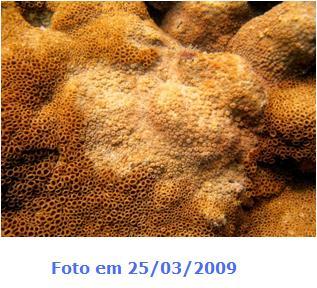
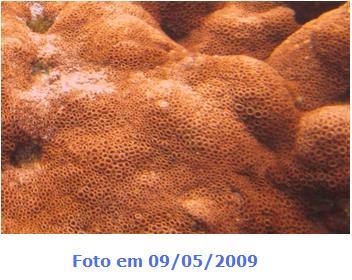
This is possible to note the improvement achieved in forty five days.
Palythoa caribaerum located 15 meters deep in Portinho area, in Laje de Santos.
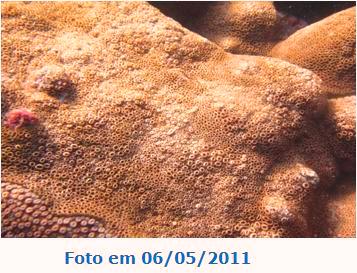
After two years, we see a full demonstration of resistant and resilience in face of temperature variation on site.
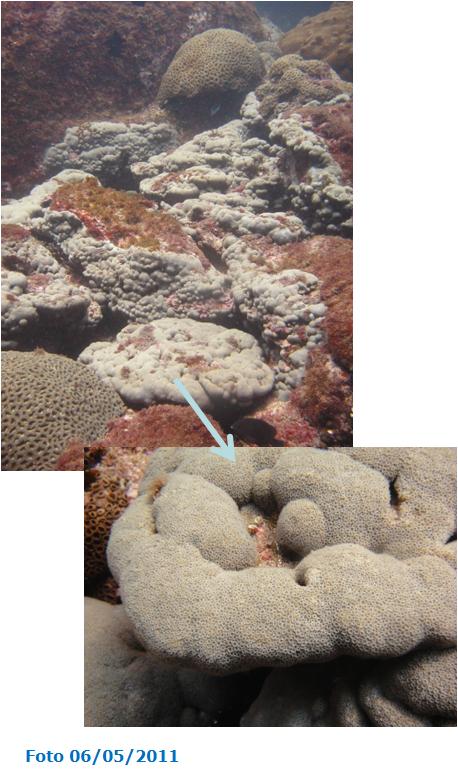
After two years, we have the bio-diversity revitalized and a new coral type has settled on Laje de Santos.These new settlement can be a good environment quality evidence who is helping the marine biodiversity expansion after Laje de Santos harmonization.
The harmonization result is more visible 3-4 years after when the benthic over is visually strengthened. Areas affected by pollution outfalls or other actions of the human being yet will present specific diseases but not the action of Global Warming.
The environmental biotic level +100 (hundred) in harmonized areas and the neutralization of harmful imbalances caused by Global Warming, are the main factors that help to strengthen all living organisms, allowing occurs increased resistance, tolerandce and self recovery, of coral reefs and all marine life.
Healthy organisms can acquire the ability to evolve and adapt to the needs that will arise, with the global imbalance.
We observed that in March 2015, with the occurrence of Bleaching Alert Level 2 of NOAA, in the region of Laje de Santos (SP), there was some partial bleaching of some brain corals, in shallow, but the rapid recovery of zooxanthellae, demonstrate the resilience of corals and the favorable habitat situation.
Below are a few photos of the event:
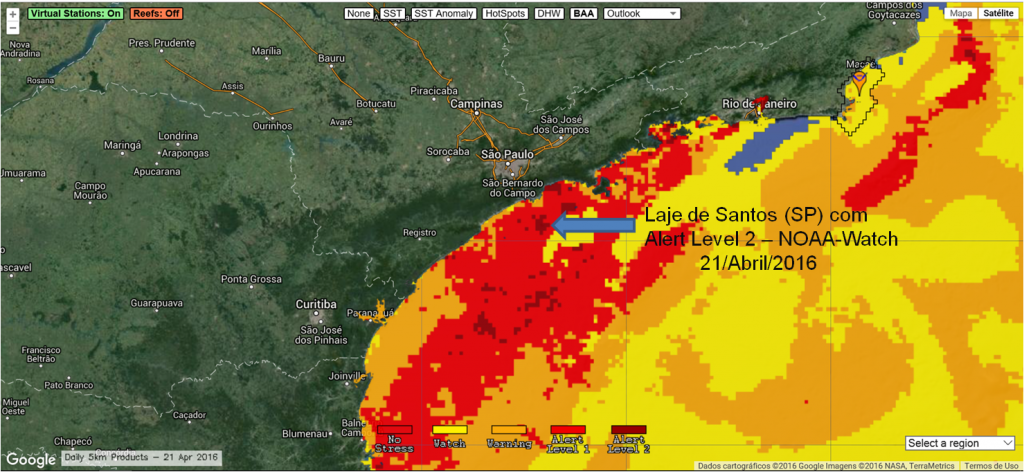
Bleaching Alert Level 2, from NOAA – Watch, occurred during the months of February and March 2015, in the region of Laje de Santos (SP)
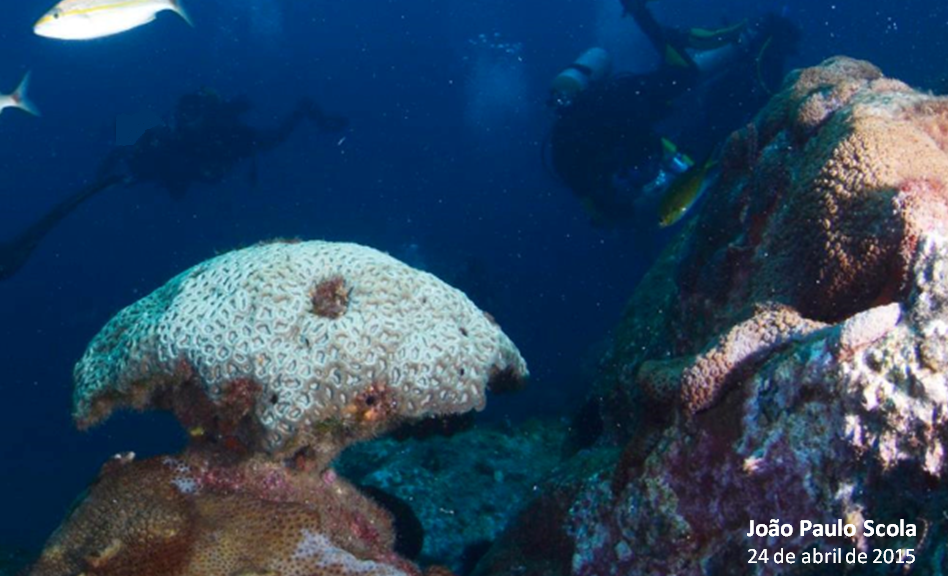
Photo April/2015, partially bleached coral
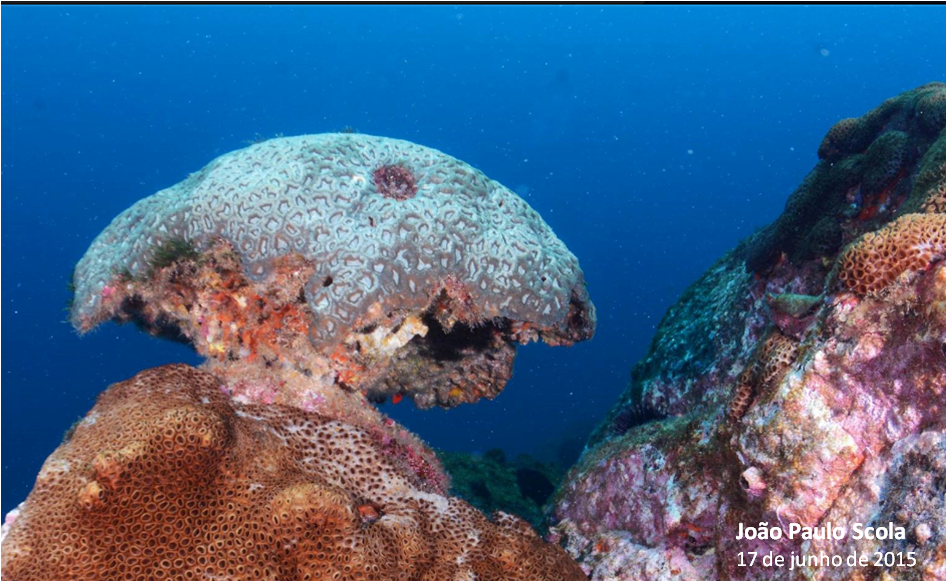
Photo July/ 2015, coral recovery.

Photo December/2015.
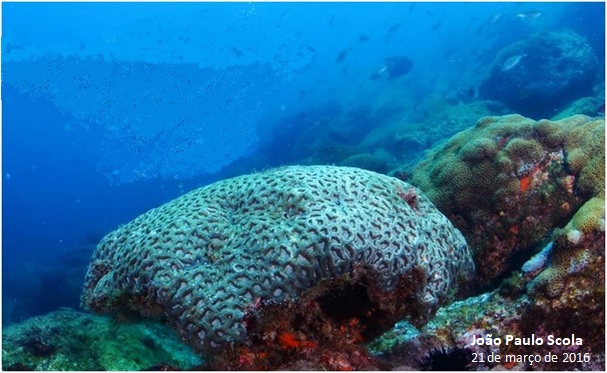
Photo March / 2016
For being a lasting energetic solution without maintenance costs and low cost of implementation, covering huge areas, energetic harmonization may be considered as an excellent option to help preserve the coral reefs and all marine life.
The preservation of corals in strategic locations and of importance, might facilitate the further proliferation, if the worst occur.
Thank you for those who will want to collaborate with scientific evidences of results of energetic harmonization and publicize their studies, to leverage the accession of entities and organizations that work in the preservation of the corals in their respective countries, for the well of the corall reefs and all marine life, of our Planet.